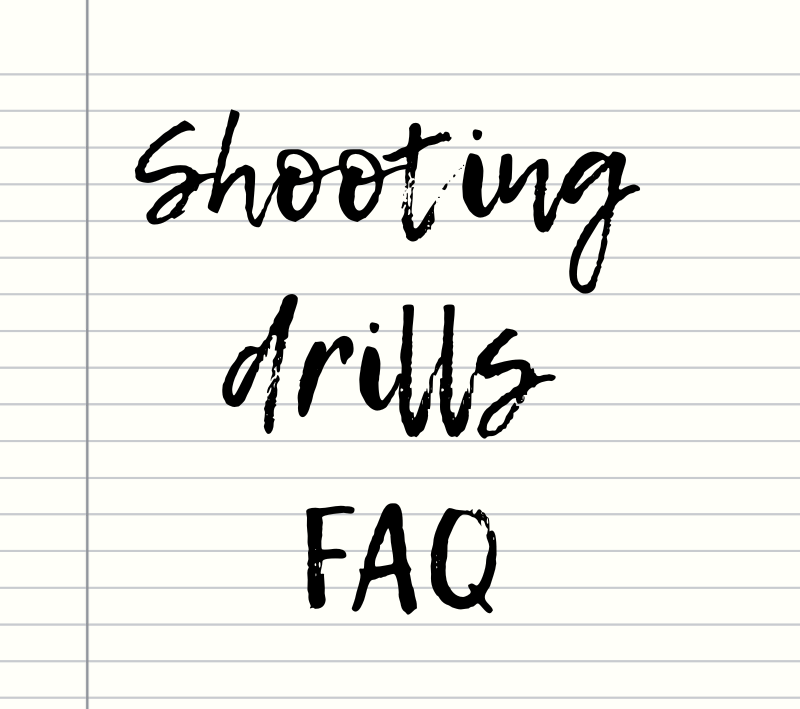List of gun drills
Looking to improve your handgun skills? The best way to get better is through consistent training with proven gun drills. Whether you’re new to shooting
or already experienced, structured handgun drills build accuracy, speed, and confidence.
At GGWG (Good Guys With Guns), we train smarter and safer. Our shooting drills cover marksmanship fundamentals, safe gun handling, and real-life application. From
dry fire practice at home to live fire range routines, these exercises help us grow as shooters and as responsible gun owners.
- Accuracy and precision training
- Drawing from the holster
- Reloading under pressure
- Movement and target transitions
- Defensive shooting skills
Train with the community, adapt each drill to your level, and share your progress.
For us, it’s always:
Good Guys With Guns – More Than Shooting
Bill Drill
Setup: One target at 7 yards.
Course: From the holster, draw and fire 6 shots into the A-zone as fast as possible.
Focus: Recoil management, grip strength, and keeping sights stable under speed.
El Presidente
Setup: 3 targets placed 1 meter apart at 10 yards. Shooter starts facing uprange, back to targets, hands up.
Course: On signal, turn 180°, draw, fire 2 shots on each target, reload, then fire 2 more shots on each.
Focus: Transitions, reloads under pressure, situational awareness.
4 Aces
Setup: One target at 7–10 yards.
Course: From holster, fire 2 shots, reload, then fire 2 more shots on the same (or another) target.
Focus: Draw speed, reload timing, grip recovery.
Accelerator Drill
Setup: 3 targets at different distances (e.g., 7 yards, 15 yards, 7 yards).
Course: Fire 2 shots per target in order: near → far → near.
Focus: Throttle control – adjusting speed between close and distant targets.
2-Reload-2
Setup: 2 targets.
Course: Fire 2 shots on first target, reload, then fire 2 shots on second target.
Focus: Smooth reload transitions, maintaining accuracy across targets.
10-10-10 Drill (FBI Drill)
Setup: One target at 10 yards.
Course: Fire 10 rounds in 10 seconds. For dry fire, use a par timer for pacing.
Focus: Accuracy under time pressure, trigger discipline.
1 Reload 1 Drill
Setup: One target at 7–10 yards.
Course: From draw, fire 1 shot, reload, then 1 more shot.
Focus: Reload efficiency and sight reacquisition.
Near-Far-Near
Setup: 2 targets – one close, one farther.
Course: Fire 2 shots on the near target, 2 on the far, then 2 back on the near.
Focus: Speed control and vision shift between distances.
Dot Torture (Dry Fire Friendly)
Setup: Print Dot Torture target (10 small dots).
Course: Follow drill instructions (draws, strong hand, weak hand, reloads). Usually 50 rounds total.
Focus: Accuracy, patience, and all-around fundamentals.
Criss-Cross Drill
Setup: 2 targets – one high left, one low right (or vice versa).
Course: Engage in a cross pattern: top-left → bottom-right → top-right → bottom-left.
Focus: Diagonal transitions, target acquisition.
3-2-1 Drill
Setup: 3 targets.
Course: Fire 3 shots on T1, 2 on T2, 1 on T3.
Focus: Rapid target discrimination, accuracy under changing round counts.
L-Drill
Setup: 3 targets in an “L” shape.
Course: Engage targets while moving around the L path, re-engage from new position.
Focus: Shooting on the move, use of cover, footwork.
T-Drill
Setup: 3+ targets in a “T” shape.
Course: Engage while moving along the top bar of the T, then down the stem.
Focus: Movement, target engagement from multiple angles.
Reload with Movement Drill
Setup: 2 targets, spaced apart.
Course: Fire 2 shots, move while reloading, then fire 2 shots from the new position.
Focus: Dynamic reloads, footwork, balance.
Figure 8 Drill
Setup: 2 cones about 5 meters apart and 2 targets.
Course: Move in a figure-8 around the cones, engaging targets on the move.
Focus: Mobility, balance, staying accurate while moving in curves.
3 Target Shoot & Move
Setup: 3 targets in a line.
Course: Fire 2 shots on T1, move, 2 shots on T2, move, 2 shots on T3.
Focus: Shooting while moving between positions.
3-Reload-6 Drill
Setup: 1–3 targets.
Course: Fire 3 shots, reload, then 6 shots (can split across targets).
Focus: Reload under higher round count stress.
One Shot Draw Drill
Setup: One target at 7–10 yards.
Course: From holster, draw and fire 1 shot. Repeat, lowering par time as you improve.
Focus: Fast, consistent first shot from draw.
1-2-3 Drill
Setup: 3 targets.
Course: Fire 1 shot on T1, 2 shots on T2, 3 shots on T3.
Focus: Pace control, mental sequencing, target awareness.
2-2-2 Drill (aka Blake Drill)
Setup: 3 targets side by side, about 1 meter apart.
Course: Fire 2 shots per target, left to right (or right to left).
Focus: Fast, accurate transitions without overtravel.
Mozambique Drill
Setup: One target at 7–10 yards.
Course: From holster, draw and fire 2 shots to the chest, then immediately 1 shot to the head box.
Focus: Accuracy shift under pressure, fast sight picture adjustment, decision-making for precision after speed.
Got questions about shooting drills, technique or training? We’re here to help and share our experience. At GGWG we believe that learning together makes us faster and more effective. Reach out and we’ll find the answers and best solutions together.


